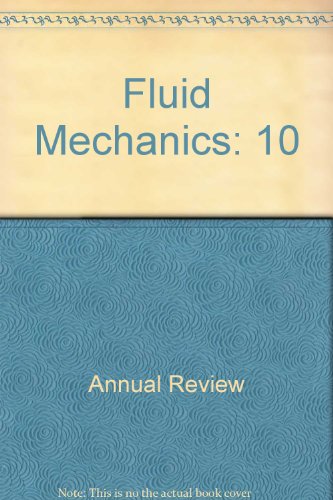粒子负载湍流:进展与展望
IF 30.2
1区 工程技术
Q1 MECHANICS
引用次数: 105
摘要
这篇综述的动机是在过去十年中,我们对粒子负载湍流物理的理解取得了快速进展,部分原因是由于测量和模拟能力的巨大进步。重点是均匀和正则壁界流动中的球形粒子。对最近数据的分析表明,在零重力条件下得出的结论不应在此条件之外进行外推,并且粒子响应时间本身不能完全定义有限大小粒子的动力学。在稀释条件下的小惯性粒子和大弱浮力球体的动力学和湍流修正方面,已经报道了几项突破,其中大部分是单独的突破。为了弥补这一差距,需要在更高浓度下进行测量,模拟完全解决更小的颗粒,以及考虑这两个阶段的理论工具,并允许探索悬浮液的流体动力学,从层流流变学和颗粒介质到颗粒湍流。预计流体力学年度评论的最终在线出版日期,第54卷是2022年1月。修订后的估计数请参阅http://www.annualreviews.org/page/journal/pubdates。本文章由计算机程序翻译,如有差异,请以英文原文为准。
Particle-Laden Turbulence: Progress and Perspectives
This review is motivated by the fast progress in our understanding of the physics of particle-laden turbulence in the last decade, partly due to the tremendous advances of measurement and simulation capabilities. The focus is on spherical particles in homogeneous and canonical wall-bounded flows. The analysis of recent data indicates that conclusions drawn in zero gravity should not be extrapolated outside of this condition, and that the particle response time alone cannot completely define the dynamics of finite-size particles. Several breakthroughs have been reported, mostly separately, on the dynamics and turbulence modifications of small inertial particles in dilute conditions and of large weakly buoyant spheres. Measurements at higher concentrations, simulations fully resolving smaller particles, and theoretical tools accounting for both phases are needed to bridge this gap and allow for the exploration of the fluid dynamics of suspensions, from laminar rheology and granular media to particulate turbulence. Expected final online publication date for the Annual Review of Fluid Mechanics, Volume 54 is January 2022. Please see http://www.annualreviews.org/page/journal/pubdates for revised estimates.
求助全文
通过发布文献求助,成功后即可免费获取论文全文。
去求助
来源期刊
CiteScore
54.00
自引率
0.40%
发文量
43
期刊介绍:
The Annual Review of Fluid Mechanics is a longstanding publication dating back to 1969 that explores noteworthy advancements in the field of fluid mechanics. Its comprehensive coverage includes various topics such as the historical and foundational aspects of fluid mechanics, non-newtonian fluids and rheology, both incompressible and compressible fluids, plasma flow, flow stability, multi-phase flows, heat and species transport, fluid flow control, combustion, turbulence, shock waves, and explosions.
Recently, an important development has occurred for this journal. It has transitioned from a gated access model to an open access platform through Annual Reviews' innovative Subscribe to Open program. Consequently, all articles published in the current volume are now freely accessible to the public under a Creative Commons Attribution (CC BY) license.
This new approach not only ensures broader dissemination of research in fluid mechanics but also fosters a more inclusive and collaborative scientific community.

 求助内容:
求助内容: 应助结果提醒方式:
应助结果提醒方式:


